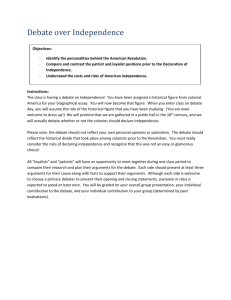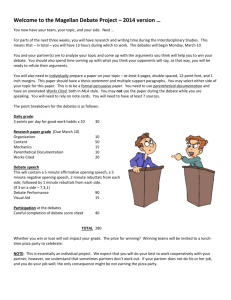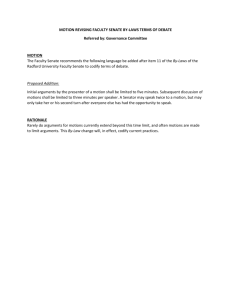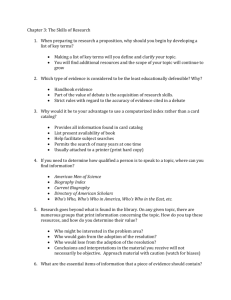File
advertisement
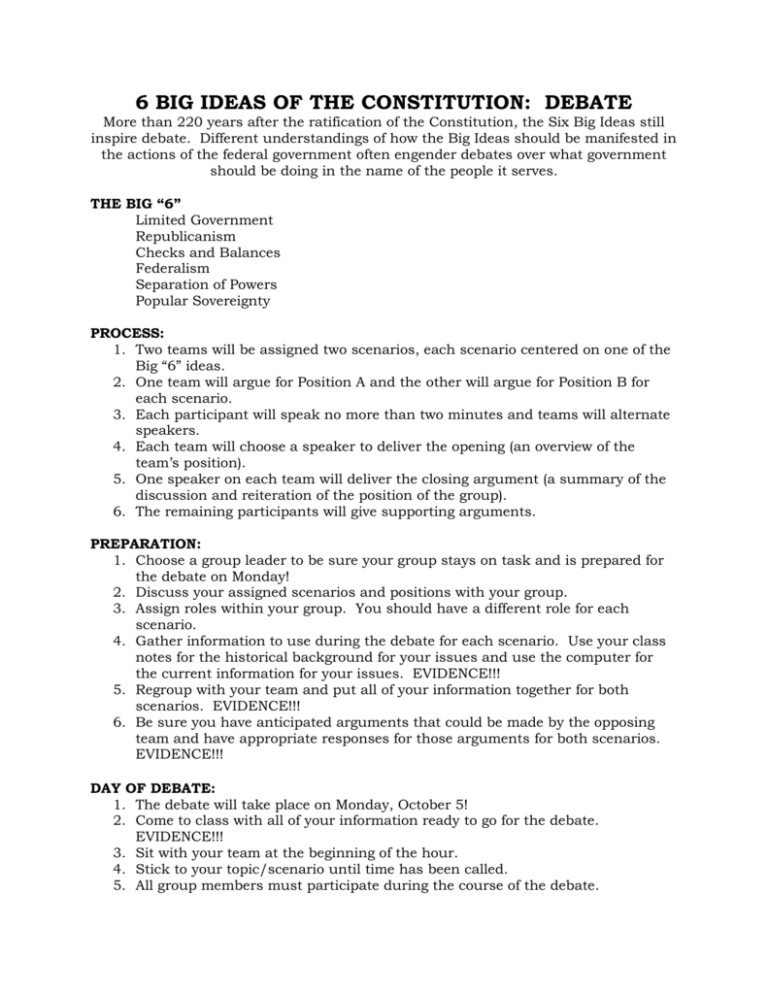
6 BIG IDEAS OF THE CONSTITUTION: DEBATE More than 220 years after the ratification of the Constitution, the Six Big Ideas still inspire debate. Different understandings of how the Big Ideas should be manifested in the actions of the federal government often engender debates over what government should be doing in the name of the people it serves. THE BIG “6” Limited Government Republicanism Checks and Balances Federalism Separation of Powers Popular Sovereignty PROCESS: 1. Two teams will be assigned two scenarios, each scenario centered on one of the Big “6” ideas. 2. One team will argue for Position A and the other will argue for Position B for each scenario. 3. Each participant will speak no more than two minutes and teams will alternate speakers. 4. Each team will choose a speaker to deliver the opening (an overview of the team’s position). 5. One speaker on each team will deliver the closing argument (a summary of the discussion and reiteration of the position of the group). 6. The remaining participants will give supporting arguments. PREPARATION: 1. Choose a group leader to be sure your group stays on task and is prepared for the debate on Monday! 2. Discuss your assigned scenarios and positions with your group. 3. Assign roles within your group. You should have a different role for each scenario. 4. Gather information to use during the debate for each scenario. Use your class notes for the historical background for your issues and use the computer for the current information for your issues. EVIDENCE!!! 5. Regroup with your team and put all of your information together for both scenarios. EVIDENCE!!! 6. Be sure you have anticipated arguments that could be made by the opposing team and have appropriate responses for those arguments for both scenarios. EVIDENCE!!! DAY OF DEBATE: 1. The debate will take place on Monday, October 5! 2. Come to class with all of your information ready to go for the debate. EVIDENCE!!! 3. Sit with your team at the beginning of the hour. 4. Stick to your topic/scenario until time has been called. 5. All group members must participate during the course of the debate. LIMITED GOVERNMENT Question: To what extent should the federal government be involved in economic issues? Position A: The federal government’s powers over taxation as well as international and interstate trade allow significant latitude in directing economic policy. Position B: The federal government should only act to remedy unfavorable economic conditions for business activity. REPUBLICANISM Question: What should be the role of citizens in creating public policy? Position A: Public policy should reflect the opinion of voters. Position B: Public policy should be created by officials who are most informed about the issues involved. CHECKS AND BALANCES Question: When the President makes a nomination, what should be the nature of the Senate’s “advice and consent?” Position A: The Senate should defer to the President’s choice of who he wants working under him. Position B: It is the Senate’s duty to make an independent judgment of a nominee’s suitability for a position serving the American people, even if that means denying the President his choice. FEDERALISM Question: How should power be divided between the federal government and the states? Position A: The Federal government should retain the most power because it is best positioned to insure fair treatment, safety and equal protection for all Americans. Position B: The states should retain the most power because they are closer to the people, better informed on local issues and best positioned to exercise authority for their residents. SEPARATION OF POWERS Question: Once Congress declares war and the President assumes the role of Commander-in-Chief who decides how the war ends? Position A: Congress, the policy making branch which represents the people, should determine peace terms. Position B: The President as Commander-in-Chief is in the best position to determine appropriate actions. POPULAR SOVEREIGNTY Question: Should voter ballot initiatives be allowed to overturn laws passed by legislative bodies? Position A: Yes; ballot initiatives allow voters to directly participate in their government. Position B: No; voters already express their views through election of public officials.




